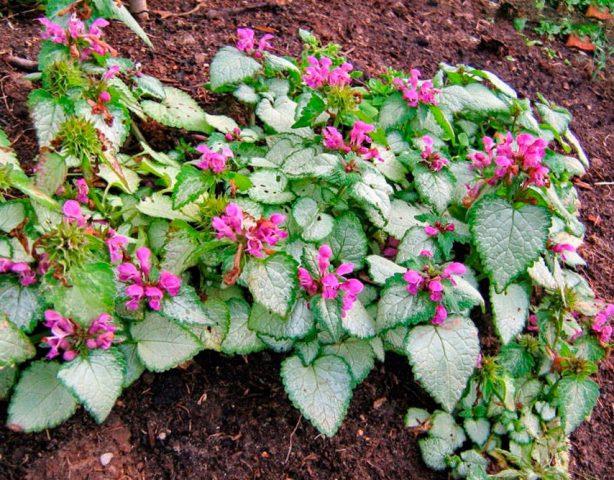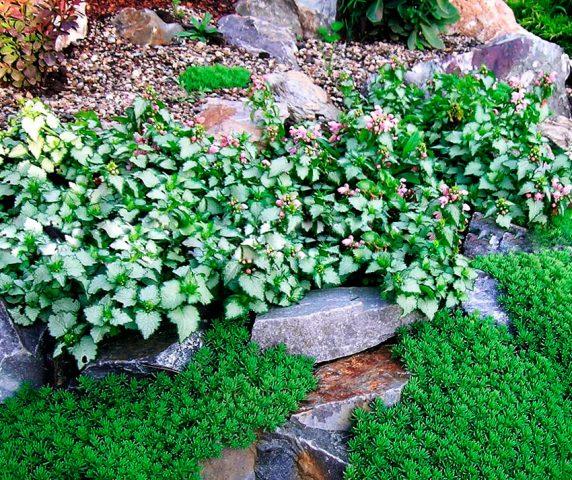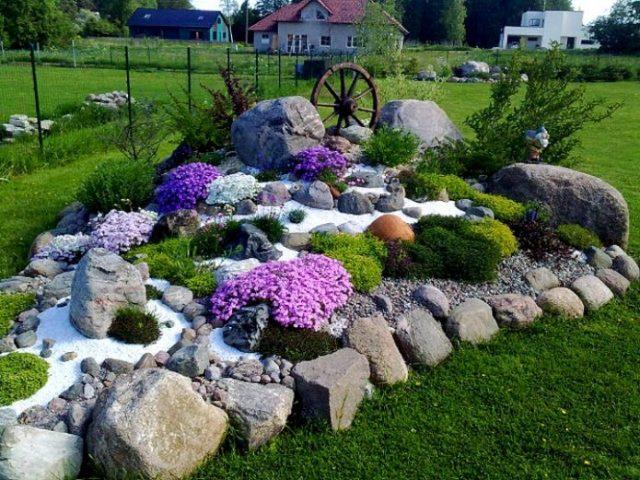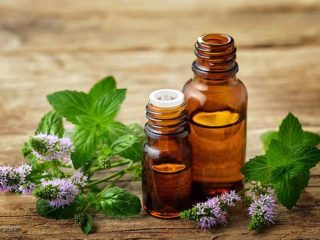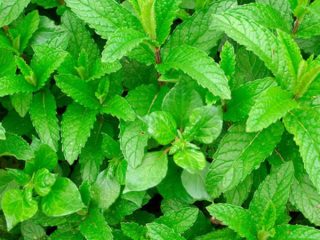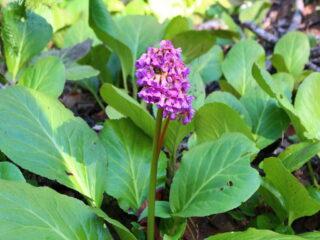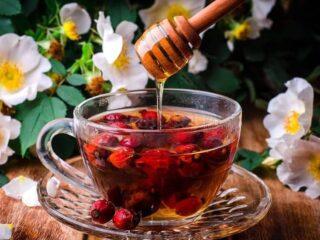Content
- 1 What does a cleaver look like
- 2 Types and varieties of yasnotka
- 3 Reproduction of lamb
- 4 Planting and caring for a cleaver in the open field
- 5 Diseases and pests
- 6 Lamb in landscape design
- 7 Useful properties of lamb
- 8 Contraindications to the use of clearcoat
- 9 Collection and procurement
- 10 Conclusion
- 11 Reviews about yasnotka
Photos and descriptions of the lamb show that it will fit well into the garden design as a ground cover plant. The culture has medicinal properties, for example, it is used in the treatment of wounds, burns, to strengthen the muscles of the uterus, as a choleretic, anticonvulsant and sedative. It takes root well in any area and quickly takes up all the space provided. Therefore, any gardener can grow a flower.
What does a cleaver look like
The lamb (Lamium) is a genus from the family of the same name, which is also called the Labiatae. It is a flowering plant that is annual and perennial. The stems spread along the ground, reaching a height of no more than 30 cm (in some species up to 45 cm), although they grow in length by 50–100 cm annually. Shoots give many branches, rooting at the nodes. Thanks to this, the plant is often used in garden decoration as a classic ground cover.
The leaves are dark green, with jagged edges, petiolate. A yellowish or silvery spot is noticeable along the central vein. The leaves of the plant are 5–8 cm long and 2–4 cm wide.
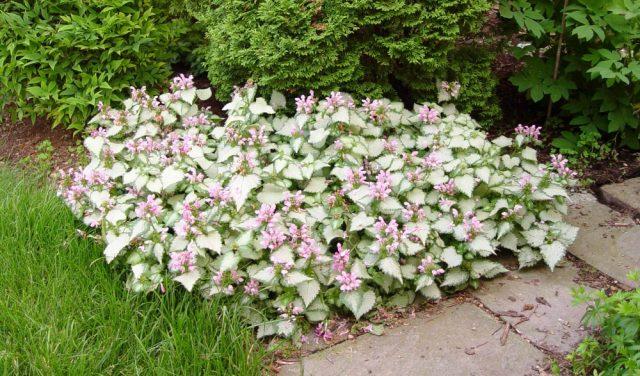
Flowers in a white, pink and purple shade
Inflorescences are formed in the leaf axils - in the middle and at the top of the shoot. Peduncles are erect and reach a height of 30 cm. The flowers bloom from mid-May to early October. The plant develops rapidly, due to which the first fruits appear already at the end of June.
Seeds are nuts that form in capsules. They dry out quickly, then crack, which is why the lamb can multiply by self-seeding. If you do not control this process, then the plant will quickly capture the entire surrounding space. The lamb belongs to the class of dicotyledons (Magnoliopsida), since its seeds consist of two cotyledons.
The distribution area of the plant is the temperate climatic zone of the Northern Hemisphere:
- Europe is everywhere;
- Turkey;
- Transcaucasia;
- Middle Asia;
- China;
- Japan;
- India.
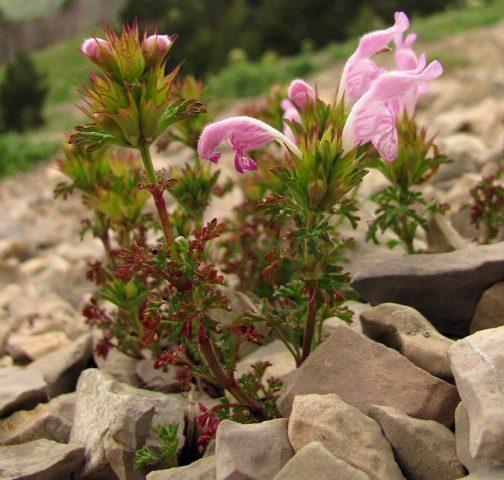
In Russia, the lamb grows in all regions - the Central part, the Urals, Siberia and the Far East
Types and varieties of yasnotka
In the genus Yasnotkovye, 25 species are known, as well as several decorative varieties used both for garden decoration and for medicinal purposes. The most popular varieties of clearcoat with a description and photo of the plant will help determine the choice of culture.
White lamb (Lamium album)
This type of grass of a lamb (pictured) is also called deaf nettle. Its leaves are similar to nettle leaves, but they do not sting because they do not secrete pain-causing substances.

White lamb is a creeping, but rather tall plant: peduncles stretch up to 45 cm
The heart-shaped leaves and the upper parts of the shoots are covered with long villi.
Deaf nettle has medicinal properties, but it also has contraindications. For example, it is used as an anti-inflammatory, astringent, analgesic, anticonvulsant, and choleretic agent. Also, the plant promotes wound healing, helps to cope with digestive disorders, and enhances appetite. The benefits of this type of lamb is also associated with the fact that it tones the muscles of the uterus, for which it is called "female herb."
Friday (Friday)
The variegated clearnet of the Fridayy variety is distinguished by its tallness. In width and height, it reaches 80–90 cm. At the same time, it grows slowly, prefers shady and well-moisturized areas.

White Friday flowers look harmonious on a green background
Bearded (Lamium barbarum)
The variety Lamium Barbarum is rarely found in gardens, as it grows mainly in the Far East, China, Japan and the Korean Peninsula. The plant is very tall, reaches 80–100 cm. The stems do not branch and have pubescence. The leaves of the plant are ovoid, reaching 8.5 cm in length and 5 cm in width. Flowering begins in June and lasts 2 months.

The flowers of Lamium Barbarum are milky in color with pink splashes.
Lamb spotted, speckled (Lamium maculatum)
The culture can be used for single plantings and in compositions with other ornamental plants (both floral and deciduous).

Spotted ash is highly decorative
The culture is interesting for leaves and bright flowers that contrast against the general background.
Bacon Silver
Lamb Bacon Silver is a perennial plant with ovoid leaf blades. The surface is bluish-green, silvery, and the edging is dark, jagged. The beauty is added by the purple flowers of Beacon Silver, contrasting brightly against the background of the original foliage. The plant prefers places with diffused lighting.

Bacon Silver variety is suitable for planting in the near-trunk circle of bushes, next to the gazebo and other structures
Golden Anniversari (Golden Anniversary)
Lamb Golden Anniversari is decorative thanks to its unusual foliage. The edges are decorated with a bright yellow piping, and there is a silvery chord in the center. A dark green stripe follows between them. Inflorescences appear in the second half of May. The Golden Anniversary Lamb does not bloom for a long time - the buds bloom within two weeks. The leaves of the plant retain their decorative effect throughout the season.
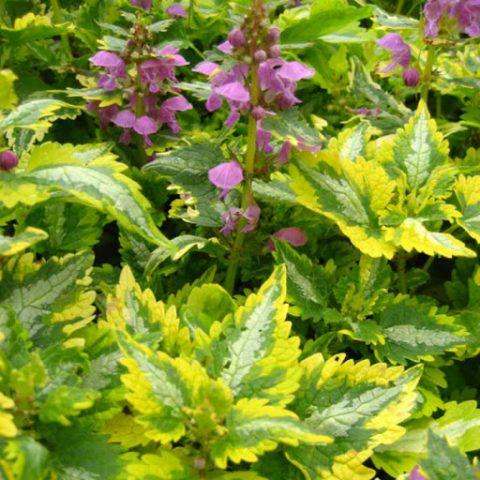
Golden Anniversari cultivar adorns the garden with yellow leaves and purple flowers
Aureum
Lamb Aureum is decorative thanks to its silvery foliage. The plant looks attractive with hosts.
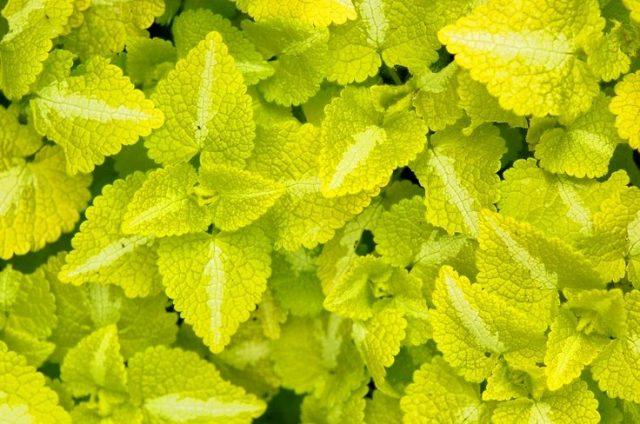
Aureum creates an interesting backdrop for vibrant garden flowers.
Yellow lamb (Lamium galeobdolon)

Yellow lamb is a creeping plant with egg-shaped leaves and beautiful flowers
Flowering begins in May, and with a warm autumn - also in September. The leaves of the plant retain their color even in winter. The culture is also called zelenchukovaya.
Florentinum (Florentinum)
The variety is distinguished by dark green leaves with a silvery pattern. Unpretentious ornamental grass. Grows well in various soils.

Florentinium revives inconspicuous areas around bushes
Type Ronsdorf
The Type Ronsdorf clapy variety adorns the garden with graceful rounded leaves and yellow inflorescences. The culture grows in moderation, so it does not interfere with neighboring plants.
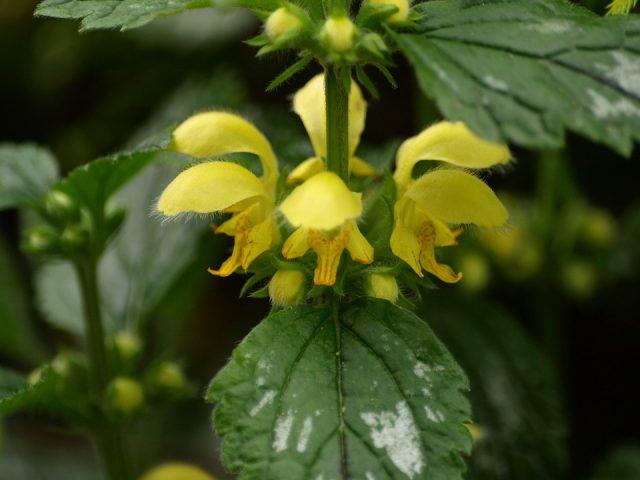
Type Ronsdorf blooms in May-June
Herman's Pride
Hermans Pride - one of the most beautiful varieties - an ornamental plant with narrow, pointed variegated leaves and yellow flowers.Looks great in a single fit.
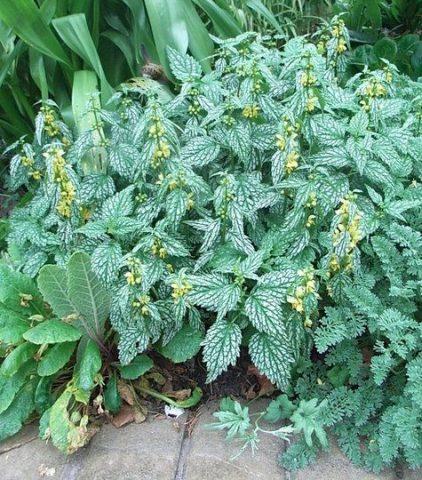
Hermans Pride is an attractive plant that can liven up even a nondescript place in the garden
Purple lamb (Lamium purpureum)
Purpurea lamb is a species that is also called red nettle or shandra for its characteristic flower color and leaf shape. Plant with a short life cycle: one or two years.
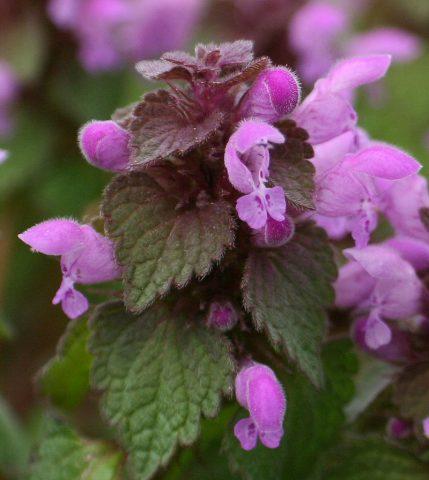
Purple lamb grows up to 30 cm
The leaves are rounded. Branches of a purple hue, there are also purple and lilac.
Felt lamb (Lamium tomentosum)
Felt lamb is a perennial species with low shoots (up to 25–30 cm). It grows quite well - up to 60 cm wide.
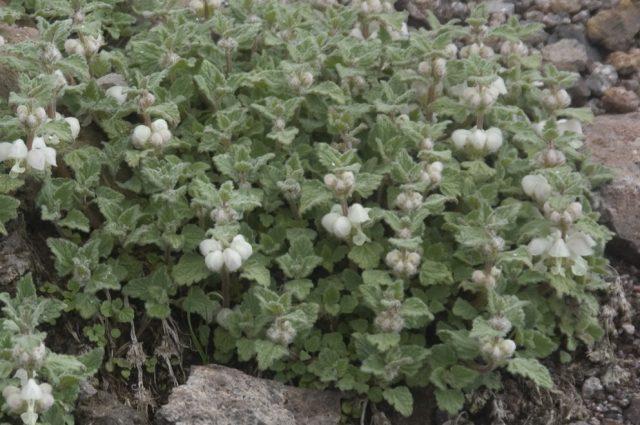
Felt lamb is suitable for rocky slides and rock gardens
The leaves are graceful, small, with a gray tomentose coating, which is why the plant got its name. The flowers are small, up to 10 mm in diameter, pure white. Prefers to grow in sunny areas, without moisture stagnation.
Nude lamb (Lamium glaberrimum)
This is a wild-growing species, which is also called the field beetle. A characteristic feature is a long, bare stem, which is not typical for other species. Found in the south and in the middle lane. In a number of regions, for example, in the Crimea, the plant is listed in the Red Book. Especially large populations can be found on the territory of reserves and gardens, for example, in the Nikitsky Botanical.

Due to the small leaves, the trunk of the lamb field seems to be bare
Reproduction of lamb
The culture is easy to propagate in several ways:
- seeds;
- dividing the bush;
- layering;
- leafy cuttings.
Lamb grows easily by self-seeding. Therefore, it is advisable to collect the seeds in the summer and store them at room temperature. 2 months before planting, they should be placed in the refrigerator for stratification (temperature 2–4 ° C). In the spring, they are sown directly into open ground.
It is better to divide the bush in early spring, when the lamb has not yet started to grow. The bush is dug up and carefully divided into several parts. Each cut should have at least two healthy shoots. They are planted in a new place, a year later, the lamb will bloom.
The easiest way to propagate a plant is with layering. It is enough to slightly bend the creeping stem to the surface and sprinkle with soil, then water. This can be done in late spring or early summer. As soon as the shoot takes root, it is separated from the mother bush and transplanted to a new place (towards the end of summer).
Propagation by leaf cuttings is not suitable for all species, for example, this is how speckled lamb can be diluted. Top cuttings with leaves are harvested at the end of summer and planted in a moist mixture of peat and sand (1: 1). They are covered with a jar and watered regularly. Originally grown at home. They are transferred to the open ground only after the roots of the yarn cuttings appear (end of September). For the winter, plants must be mulched with leaf litter, sawdust or straw.
Planting and caring for a cleaver in the open field
Lamb seeds are planted in early spring, and this does not even require growing seedlings. The plant has good frost resistance, so it can be easily cultivated in most regions of Russia.
Seed sowing dates
Seeds are sown in open ground in early spring when the snow has completely melted, since melt water can wash away the seed. You can start planting a plant in the middle lane in early April, and in the Urals and Siberia - in the second half of the month. Another possible date is October, a few days before the onset of the first frost.
Site and soil requirements
Lamb is an undemanding plant that takes root well on different types of soils. If possible, it is better to choose light sandy loam or loamy soil with moderate fertility.
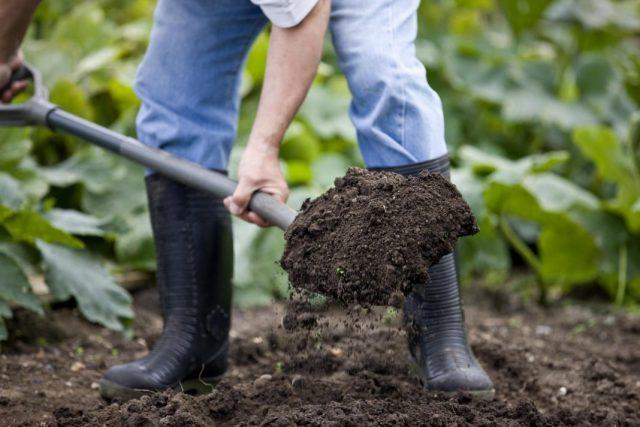
Previously in the fall, you can dig up a flower bed and add 3-5 kg of humus or compost per 1 m2 of area
The spot for the clear should be well lit, although a short shadow is also allowed.The site should not be in a lowland where moisture constantly stagnates. If possible, the site should be protected from strong winds.
Sowing seeds
The instructions for planting seeds are quite simple:
- The prepared soil is carefully leveled, all large earth lumps are broken.
- Seeds are spread over the surface without deepening.
- Sprinkle a little with soil.
- Water (preferably from a spray).
In the future, care comes down to timely watering. The soil surface should not dry out, but moisture stagnation should not be allowed. As soon as the seedlings reach 5–7 cm, they are carefully thinned out and planted at intervals of 50–70 cm (depending on the characteristics of the species). Such plants will bloom only after 2 years, so you should not wait for buds in the first season.
Follow-up care
Caring for the clear is quite simple. The main actions are as follows:
- Regular plentiful watering: if the rains are light, then weekly, and if drought occurs - 2 times more often. It is important to pay attention to the leaves: if they begin to curl, and even more so to fall off, the flower does not have enough moisture.
- You can feed it once a season at the end of May. As soon as the plant begins to bloom, it is given mullein, droppings, cut grass infusion, or other organic fertilizer. If the soil is depleted, at the end of the flowering of the plant (August), you can give a mixture of potassium salt and superphosphate in equal amounts (1 tsp per 1 m2).
- The flower is actively growing, so it needs regular pruning during the summer. All long shoots of lamb should be pinched in order to maintain the shape of the bush and make the flowering more lush.
All these simple rules of planting and care will allow you to grow a beautiful perennial cleaver (pictured).
At this point, the bushes can be divided (in early spring), which will thin out the old plantings. Otherwise, the lamb will crowd out the neighboring plants.
Diseases and pests
The crop has good resistance to most diseases and pests. As a result of severe waterlogging, it can suffer from rot. Such plants look clearly painful, extraneous spots and dots appear on the surface of the leaves. They need to be dug up and rotted roots and foliage removed. Then the bush is planted back and it and neighboring plants are treated with fungicides: Bordeaux liquid, Fitosporin, Fundazol, Skor, Ordan, Tattu.
Of insects, mealybugs, scale insects and spider mites can cause particular harm to the plant. When they are found, the bushes are treated with insecticides: "Fufanon", "Fitosporin", "Vertimek", "Aktara", "Decis", "Confidor".
You can also use folk remedies - a decoction of marigold flowers, a solution of wood ash with soap, an infusion of tobacco dust, cloves of garlic, chili and others.
Lamb in landscape design
Certain plant species and varieties have a high decorative value due to attractive flowers and leaves. Lamb is a good ground cover crop that can decorate a front flower bed and nondescript places in the garden. It is used in the design of the border, in mixborders, alpine slides, to cover the ground around the bushes. You can also use it as an ampelous plant if it is grown in pots, tall flowerpots, or on higher elevations in the garden.
Used in single plantings and in compositions. Interesting options with a photo will help you choose the best design:
- The plant is a ground cover.
- Decorating an unattractive garden spot.
- Rocky hill.
- Composition with hosts and other ornamental plants.
- Alpine slide.
Useful properties of lamb
The beneficial properties of the lamb plant are associated with its rich chemical composition:
- chlorogenic acid;
- proline betaine;
- derivatives of organic acids;
- mucus;
- tannins;
- etheric little;
- vitamin C;
- flavonoids (including tyramine, histamine, choline);
- saponins.
Thanks to this, the plant is used as a means of complex effects on the body:
- anticonvulsant;
- choleretic;
- calming;
- weak sleeping pill;
- hemostatic;
- expectorant;
- astringent;
- wound healing;
- diuretic.

Tea from a lamb is taken orally 3 times a day, 50 ml
Contraindications to the use of clearcoat
The plant can be used by almost all people. However, in some cases, it is not recommended to use it:
- allergies, individual intolerance;
- low pressure;
- the period of pregnancy and lactation;
- constipation;
- increased blood clotting.
Collection and procurement
In order to maximally preserve the medicinal properties of the lamb, it is advisable to harvest only the corolla of flowers. However, collecting them is quite difficult, so they are usually taken along with the tops. Harvesting of raw materials begins immediately after the blooming of the buds and continues continuously until the end of summer.
Further, it is better to separate the corolla of the plant and dry it in the open air (under a canopy) or in a room with good ventilation. Thermal drying is also possible in a special apparatus at a moderate temperature up to +35 ° C. The finished raw materials become dry, but at the same time they do not fall apart. It is placed in jars and closed. Store at room temperature. Raw materials are suitable for twelve months.
Conclusion
The photo and description of the clear flower show the attractiveness of this flower. The culture is undemanding to growing conditions. She doesn't need much care. Beautiful variegated lambs adorn the garden. The seeds can be sown outdoors. For the winter, it is enough to sprinkle flowers with leaves and straw.
Reviews about yasnotka

